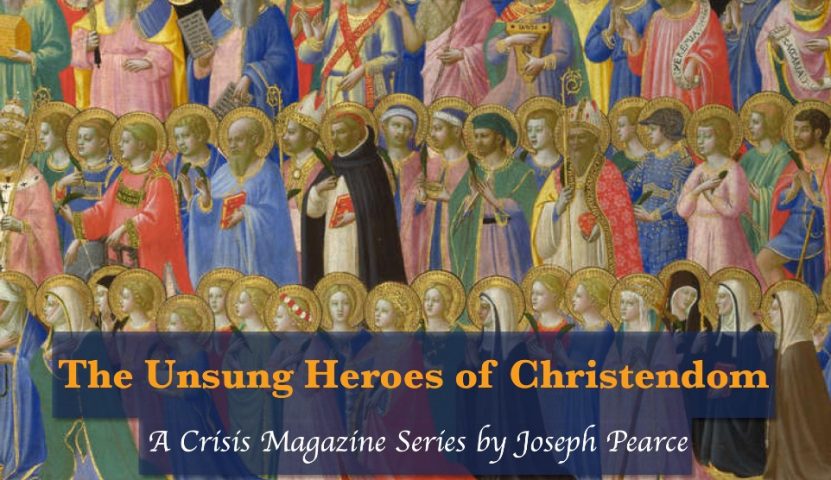By Joseph Pearce, Crisis Magazine, March 22, 2025
Joseph Pearce is Visiting Professor of Literature at Ave Maria University and a Visiting Fellow of Thomas More College of Liberal Arts (Merrimack, New Hampshire). The author of over thirty books, he is editor of the St. Austin Review, series editor of the Ignatius Critical Editions, senior instructor with Homeschool Connections, and senior contributor at the Imaginative Conservative and Crisis Magazine. His personal website is http://www.jpearce.co.
There is a little-known English saint who shares March 17 with St. Patrick as her feast day, even though she is never invited to the party. This is St. Withburga.
[Editor’s Note: This is the thirty-fourth in a multi-part series on the unsung heroes of Christendom.]
 Over the centuries, the English have been something of a curse to the Irish. English rulers, such as Henry VIII, Elizabeth I, and Oliver Cromwell, have sought to impose their will on the people of Ireland, often through the tyrannical use of terror on a defenseless population. There is, however, one sense in which the Irish have conquered not only the English but the whole English-speaking world.
Over the centuries, the English have been something of a curse to the Irish. English rulers, such as Henry VIII, Elizabeth I, and Oliver Cromwell, have sought to impose their will on the people of Ireland, often through the tyrannical use of terror on a defenseless population. There is, however, one sense in which the Irish have conquered not only the English but the whole English-speaking world.
This is through the towering figure of St. Patrick who reigns supreme on March 17, his feast day eclipsing even the feast of St. Joseph two days later. It is true that the English might claim, with patriotic petulance, that the great Irish saint was actually born in what is now England, but their plaintive protests fall on deaf ears. St. Patrick is the very epitome of Catholic Ireland, its patron saint and the very paterfamilias of the nation. ….
Continue reading >>>>>>>>





 Over the centuries, the English have been something of a curse to the Irish. English rulers, such as Henry VIII, Elizabeth I, and Oliver Cromwell, have sought to impose their will on the people of Ireland, often through the tyrannical use of terror on a defenseless population. There is, however, one sense in which the Irish have conquered not only the English but the whole English-speaking world.
Over the centuries, the English have been something of a curse to the Irish. English rulers, such as Henry VIII, Elizabeth I, and Oliver Cromwell, have sought to impose their will on the people of Ireland, often through the tyrannical use of terror on a defenseless population. There is, however, one sense in which the Irish have conquered not only the English but the whole English-speaking world.

